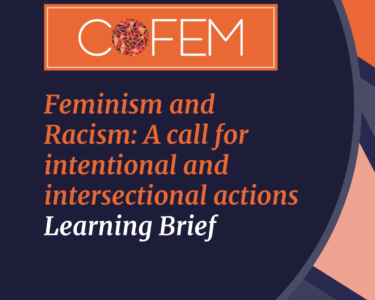COFEM Learning Brief Series

This Learning Brief aims to facilitate learning on racism within feminism, and on intersectional feminism as a tool to rectify Western feminism’s exclusionary practice. It highlights the impact on violence against women and girls while attempting to provoke action within the development and humanitarian sector. This document is intended to reach readers who are interested in engaging more critically around intersectional feminism and anti-racism concepts that can be applied and inform current and future work.
To foster dialogue and create space, this learning brief provides an opportunity to delve deeper into terms that impact diverse women and girls around the world.
When considering feminism and racism, the concept and role of intersectionality is essential to unpack the oppressive factors that maintain gender-based violence. Intersectionality is a term coined by Kimberle Crenshaw (1991) to “denote the various ways in which race and gender interact to shape the multiple dimensions of Black women” within the context of employment (p. 1244). Crenshaw’s perspectives illustrated how Black women’s experiences were not confined “within the traditional boundaries of race or gender discrimination,” rather through the lens of the intersectionality of racism and sexism in which the dimensions of race and gender coexist (p. 1244).